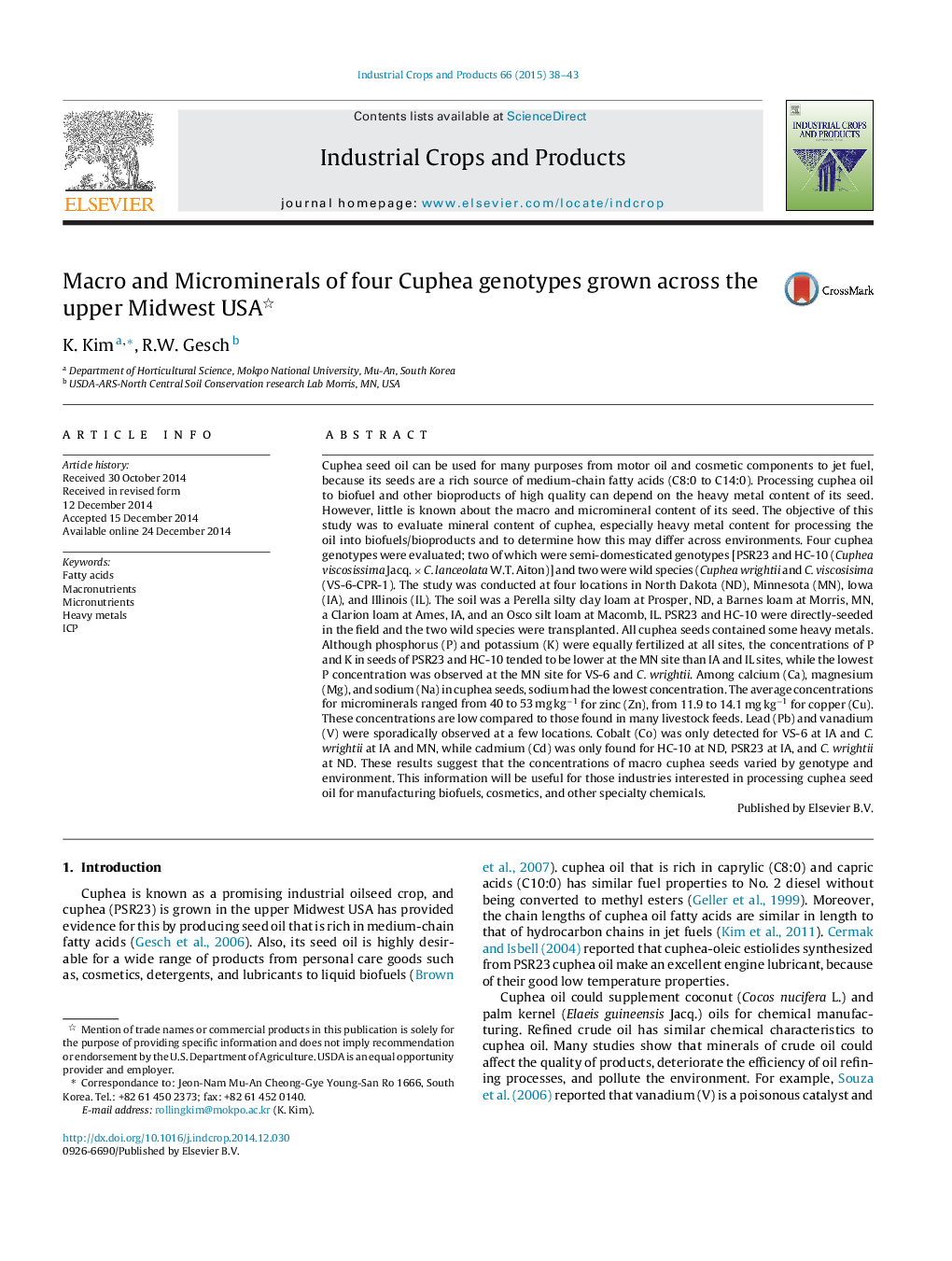| کد مقاله | کد نشریه | سال انتشار | مقاله انگلیسی | نسخه تمام متن |
|---|---|---|---|---|
| 4513187 | 1624843 | 2015 | 6 صفحه PDF | دانلود رایگان |

• Elemental content of seed oil impacts quality for industrial processing.
• Macro and microminerals were determined in cuphea seed from four locations.
• Mineral type and content varied with genotype and site of production.
• Heavy metal content was the greatest in wild species of cuphea.
• Oil quality of domesticated cuphea genotypes may be sufficient for bioproducts.
cuphea seed oil can be used for many purposes from motor oil and cosmetic components to jet fuel, because its seeds are a rich source of medium-chain fatty acids (C8:0 to C14:0). Processing cuphea oil to biofuel and other bioproducts of high quality can depend on the heavy metal content of its seed. However, little is known about the macro and micromineral content of its seed. The objective of this study was to evaluate mineral content of cuphea, especially heavy metal content for processing the oil into biofuels/bioproducts and to determine how this may differ across environments. Four cuphea genotypes were evaluated; two of which were semi-domesticated genotypes [PSR23 and HC-10 (Cuphea viscosissima Jacq. × C. lanceolata W.T. Aiton)] and two were wild species (Cuphea wrightii and C. viscosisima (VS-6-CPR-1). The study was conducted at four locations in North Dakota (ND), Minnesota (MN), Iowa (IA), and Illinois (IL). The soil was a Perella silty clay loam at Prosper, ND, a Barnes loam at Morris, MN, a Clarion loam at Ames, IA, and an Osco silt loam at Macomb, IL. PSR23 and HC-10 were directly-seeded in the field and the two wild species were transplanted. All cuphea seeds contained some heavy metals. Although phosphorus (P) and potassium (K) were equally fertilized at all sites, the concentrations of P and K in seeds of PSR23 and HC-10 tended to be lower at the MN site than IA and IL sites, while the lowest P concentration was observed at the MN site for VS-6 and C. wrightii. Among calcium (Ca), magnesium (Mg), and sodium (Na) in cuphea seeds, sodium had the lowest concentration. The average concentrations for microminerals ranged from 40 to 53 mg kg−1 for zinc (Zn), from 11.9 to 14.1 mg kg−1 for copper (Cu). These concentrations are low compared to those found in many livestock feeds. Lead (Pb) and vanadium (V) were sporadically observed at a few locations. Cobalt (Co) was only detected for VS-6 at IA and C. wrightii at IA and MN, while cadmium (Cd) was only found for HC-10 at ND, PSR23 at IA, and C. wrightii at ND. These results suggest that the concentrations of macro cuphea seeds varied by genotype and environment. This information will be useful for those industries interested in processing cuphea seed oil for manufacturing biofuels, cosmetics, and other specialty chemicals.
Journal: Industrial Crops and Products - Volume 66, April 2015, Pages 38–43